Renault Kangoo VS Peugeot 408 – Specs, Efficiency & Price Comparison
Which model is the better choice – the Renault Kangoo or the Peugeot 408? We compare performance (130 HP vs 225 HP), boot capacity (950 L vs 536 L), efficiency (20.20 kWh5.20 L vs 15.10 kWh1.40 L), and of course, the price (23100 £ vs 34300 £).
Find out now which car fits your needs better!
The Renault Kangoo (High Roof Estate) is powered by a Diesel, Petrol or Electric engine and comes with a Manuel or Automatic transmission. In comparison, the Peugeot 408 (SUV) features a Plugin Hybrid, Electric or Petrol MHEV engine and a Automatic gearbox.
When it comes to boot capacity, the Renault Kangoo offers 950 L, while the Peugeot 408 provides 536 L – depending on what matters most to you. If you’re looking for more power, you’ll need to decide whether the 130 HP of the Renault Kangoo or the 225 HP of the Peugeot 408 suits your needs better.
There are also differences in efficiency: 20.20 kWh5.20 L vs 15.10 kWh1.40 L. In terms of price, the Renault Kangoo starts at 23100 £, while the Peugeot 408 is available from 34300 £.
Compare all the key specs now and find out which model fits your lifestyle best!
Renault Kangoo
The Renault Kangoo high-roof van delivers a practical and versatile solution for both family and commercial use, with its spacious interior and adaptable seating arrangements. Its modern design and user-friendly features provide comfort and convenience, making it an appealing option for those needing a reliable workhorse. Additionally, the efficient engine options ensure a balanced approach to performance, keeping running costs manageable for everyday driving.
details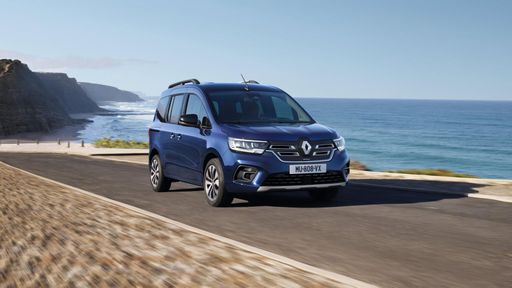 @ Renault
@ Renault
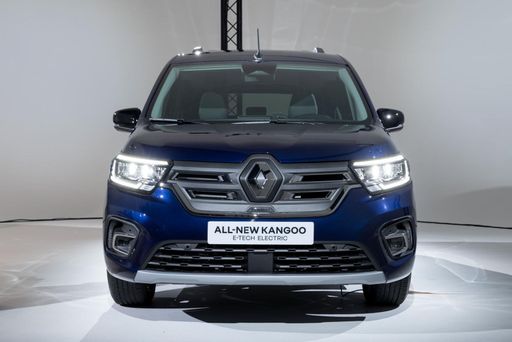 @ Renault
@ Renault
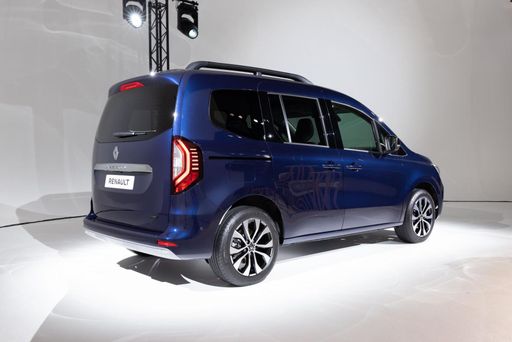 @ Renault
@ Renault
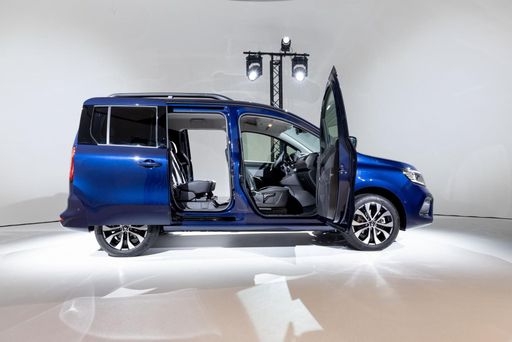 @ Renault
@ Renault
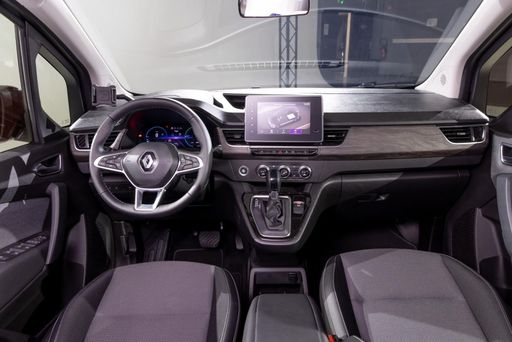 @ Renault
@ Renault
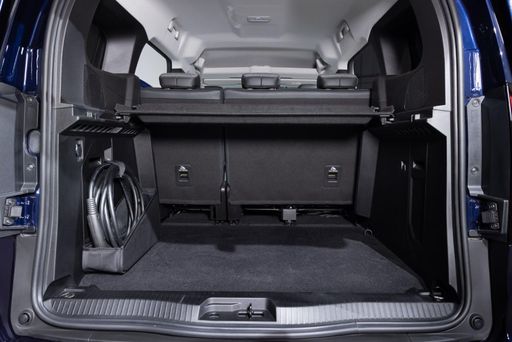 @ Renault
@ Renault
Peugeot 408
The Peugeot 408 captivates with its sleek and dynamic design, setting it apart in the competitive crossover market. Its interior offers a perfect blend of comfort and cutting-edge technology, creating an enjoyable driving experience. The model's efficient performance and modern features make it a compelling choice for those seeking both style and functionality in their vehicles.
details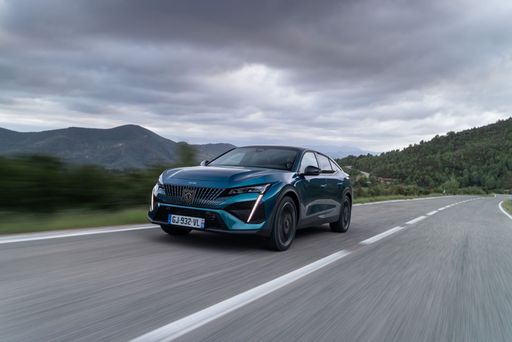 @ media.stellantis.com
@ media.stellantis.com
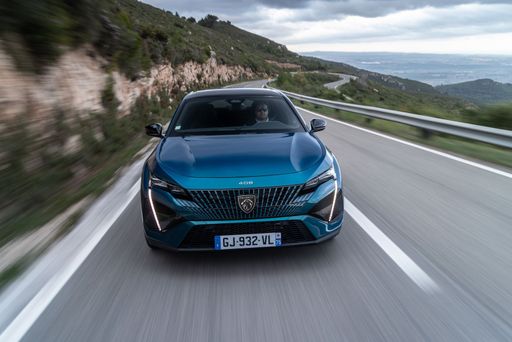 @ media.stellantis.com
@ media.stellantis.com
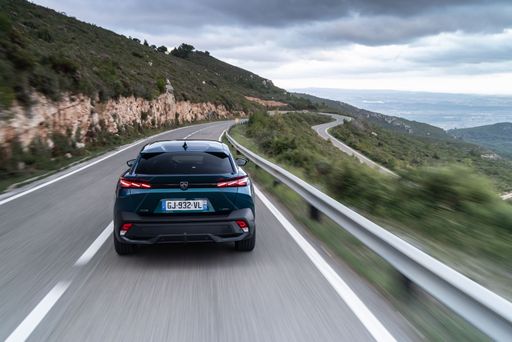 @ media.stellantis.com
@ media.stellantis.com
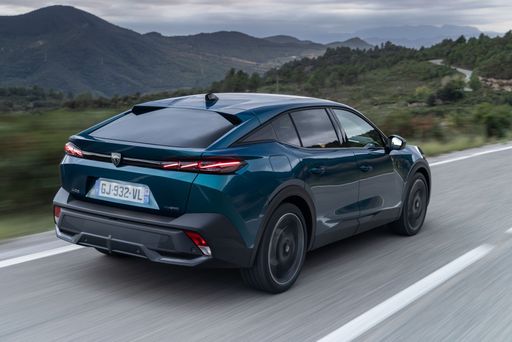 @ media.stellantis.com
@ media.stellantis.com
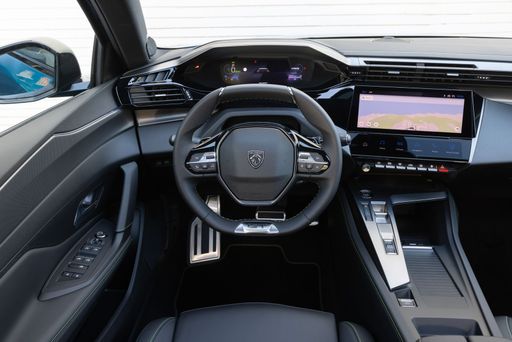 @ media.stellantis.com
@ media.stellantis.com

|

|
|
|
|
Costs and Consumption |
|
|---|---|
|
Price
23100 - 36200 £
|
Price
34300 - 44400 £
|
|
Consumption L/100km
5.2 - 7.1 L
|
Consumption L/100km
1.4 - 5.1 L
|
|
Consumption kWh/100km
20.2 - 21.5 kWh
|
Consumption kWh/100km
15.10 kWh
|
|
Electric Range
278 - 285 km
|
Electric Range
63 - 453 km
|
|
Battery Capacity
-
|
Battery Capacity
11.3 - 58.2 kWh
|
|
co2
0 - 161 g/km
|
co2
0 - 114 g/km
|
|
Fuel tank capacity
54 L
|
Fuel tank capacity
40 - 52 L
|
Dimensions and Body |
|
|---|---|
|
Body Type
High Roof Estate
|
Body Type
SUV
|
|
Seats
5 - 7
|
Seats
5
|
|
Doors
5
|
Doors
5
|
|
Curb weight
1585 - 2041 kg
|
Curb weight
1544 - 1879 kg
|
|
Trunk capacity
500 - 950 L
|
Trunk capacity
471 - 536 L
|
|
Length
4486 - 4911 mm
|
Length
4687 mm
|
|
Width
1860 - 1919 mm
|
Width
1848 mm
|
|
Height
1838 - 1869 mm
|
Height
1478 mm
|
|
Payload
400 - 609 kg
|
Payload
371 - 456 kg
|
Engine and Performance |
|
|---|---|
|
Engine Type
Diesel, Petrol, Electric
|
Engine Type
Plugin Hybrid, Electric, Petrol MHEV
|
|
Transmission
Manuel, Automatic
|
Transmission
Automatic
|
|
Transmission Detail
Schaltgetriebe, Automat. Schaltgetriebe (Doppelkupplung)
|
Transmission Detail
Automatikgetriebe, Automat. Schaltgetriebe (Doppelkupplung)
|
|
Drive Type
Front-Wheel Drive
|
Drive Type
Front-Wheel Drive
|
|
Power HP
95 - 130 HP
|
Power HP
145 - 225 HP
|
|
Acceleration 0-100km/h
11.6 - 15.6 s
|
Acceleration 0-100km/h
7.2 - 9.4 s
|
|
Max Speed
130 - 184 km/h
|
Max Speed
160 - 233 km/h
|
|
Torque
200 - 270 Nm
|
Torque
230 - 360 Nm
|
|
Number of Cylinders
4
|
Number of Cylinders
4
|
|
Power kW
70 - 96 kW
|
Power kW
107 - 165 kW
|
|
Engine capacity
1332 - 1461 cm3
|
Engine capacity
1199 - 1598 cm3
|
General |
|
|---|---|
|
Model Year
2022 - 2024
|
Model Year
2024 - 2025
|
|
CO2 Efficiency Class
E, F, D, A
|
CO2 Efficiency Class
B, A, C
|
|
Brand
Renault
|
Brand
Peugeot
|
Renault Kangoo
Introducing the Renault Kangoo: A Versatile Performer
The Renault Kangoo represents a fusion of practicality and innovation, designed to cater to both families and commercial users. With its flexible seating arrangements and a variety of engine options, this model continues to be a stalwart in the high-roof van segment.
Powertrains and Efficiency: Options for Every Driver
The Renault Kangoo offers a wide range of powertrain options to suit diverse needs. Whether you're looking for the fuel efficiency of the diesel engines that range from 95 PS to 115 PS, or the spirited performance of the petrol engines up to 130 PS, the Kangoo provides an option for everyone. The introduction of the E-Tech Electric variant marks a significant step towards sustainable driving with an impressive range of up to 285 km per charge.
Technological Innovations: A Step Ahead
Renault is known for integrating cutting-edge technology, and the Kangoo is no exception. The tech-laden interior is available in various configurations, emphasising comfort and connectivity. The inclusion of advanced driver assistance systems and intelligent power management in the electric models showcases Renault's commitment to innovation.
Economical and Eco-Friendly: In the Details
The Kangoo is engineered with efficiency at its core. The diesel models boast a remarkable fuel consumption as low as 5.2 L/100km, while petrol variants offer a respectable 6.8 to 7.1 L/100km. For the eco-conscious, the zero-emissions electric versions provide an efficient energy consumption between 20.2 to 21.5 kWh/100km, along with a CO2 efficiency class as high as A, making it an attractive choice for those seeking to reduce their carbon footprint.
Space and Versatility: Tailored to Your Needs
Boasting impressive cargo space up to 950 litres, the Kangoo provides unparalleled versatility. Its dimensions, with lengths between 4486 mm and 4911 mm and widths of 1860 mm to 1919 mm, ensure it can comfortably accommodate both passenger seating and ample load capacity. The Kangoo's design ensures you have the flexibility to meet all your transport needs, whether personal or professional.
Design and Comfort: A Sophisticated Ride
The Renault Kangoo has been designed with comfort and convenience in mind. It offers sophisticated design elements, high-quality materials, and options like the high-tech ‘Equilibre’ and ‘Techno’ trims, ensuring every drive is as enjoyable as possible. These trims bring not just style, but a sense of personalized luxury to your daily commute or business endeavours.
Conclusion: The Renault Kangoo at a Glance
The Renault Kangoo stands out as a truly versatile vehicle, blending efficiency, technology, and space in one package. Its range of engine and gearbox options, along with its myriad features, cater to a wide array of needs, making it a top choice in the high-roof van category. Whether you're an eco-conscious driver, a business operator, or a family in need of space, the Kangoo offers a reliable and innovative solution.
Peugeot 408
The New Lion on the Block: The Peugeot 408
As Peugeot continues to innovate within the SUV segment, the latest iteration of the Peugeot 408 sets new standards in technology, efficiency, and design. With its cutting-edge engineering and innovative features, the Peugeot 408 is more than just a stylish SUV—it's a marvel of modern automotive technology. This article dives into the technical details and innovations that make the Peugeot 408 a highly compelling choice for consumers in the market for a new vehicle.
A Glimpse into the Engine Bay: Performance and Efficiency
The Peugeot 408 comes with a diverse range of powertrains that blend performance and fuel efficiency. Featuring a selection of petrol mild-hybrid, petrol, and plug-in hybrid options, the 408 caters to a variety of driving preferences. The engines have a power output ranging from 131 to 225 PS, ensuring that there's a version suited to both city commutes and highway cruising.
Fuel economy is a significant focus, with consumption figures spanning from an impressive 1.5 L/100km for the plug-in hybrid models to a moderate 6.1 L/100km for the traditional petrol engines. Additionally, the plug-in hybrid versions boast an electric range of up to 55 kilometres, ideal for reducing emissions during shorter journeys.
Ultimate Comfort and Technology in the Cockpit
Peugeot excels in creating interiors that provide both comfort and cutting-edge technology. The 408 doesn't disappoint in this regard. It offers a spacious cabin, accommodating up to five passengers, with high-quality materials and ergonomic designs that enhance the driving experience.
The infotainment system in the Peugeot 408 is state-of-the-art, featuring a responsive touchscreen interface, premium sound options, and seamless connectivity with smartphones. Advanced driver-assistance systems such as adaptive cruise control, lane-keeping assist, and automated emergency braking ensure that journeys are not only comfortable but also safe.
Design Meets Function: Exterior and Practicality
In the realm of exterior design, Peugeot has delivered a striking silhouette with aerodynamic lines and a robust SUV stance. Measuring 4687 mm in length, 1848 mm in width, and 1478 mm in height, the 408 boasts a dynamic presence on the road without compromising on practicality.
Practicality is further enhanced by a generous boot space that ranges from 471 to 536 litres, depending on the model, making it perfect for family trips or weekend getaways. A high payload capacity and thoughtfully designed storage solutions ensure that the Peugeot 408 remains versatile, able to adapt to various lifestyle needs.
Environmental Responsibility and Sustainable Driving
With a keen eye on sustainability, the Peugeot 408 offers an impressive CO2 efficiency rating. The plug-in hybrid versions, in particular, present a substantial reduction in carbon emissions, operating at as low as 33 g/km. This makes the 408 a viable option for environmentally conscious consumers seeking to minimise their carbon footprint.
The automaker's commitment to sustainability does not end at emissions. The materials used in the 408's construction are carefully selected to promote durability and recyclability, ensuring that the vehicle maintains a lower impact on the environment throughout its lifecycle.
Conclusion: The Perfect Blend of Innovation and Tradition
The Peugeot 408 is a remarkable illustration of Peugeot's ability to blend traditional automotive values with the latest technological advancements. Its innovative powertrains, luxurious interiors, and forward-thinking design make it a formidable contender in the competitive SUV market. Whether you prioritise fuel economy, driving performance, or cutting-edge technology, the Peugeot 408 is poised to meet and exceed expectations. As Peugeot advances into the future, the 408 leads the charge as a testament to the brand's relentless pursuit of excellence.
The prices and data displayed are estimates based on German list prices and may vary by country. This information is not legally binding.
